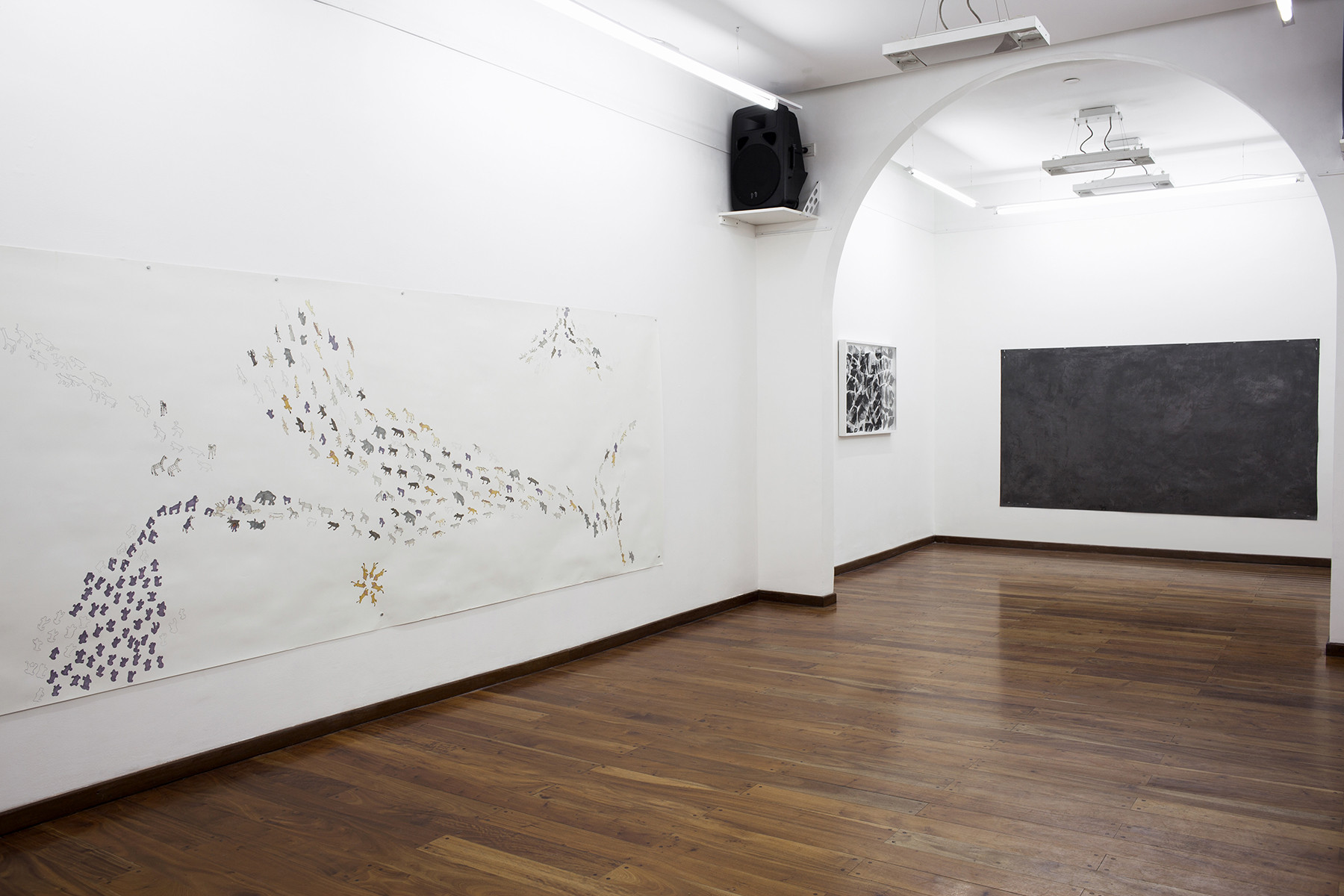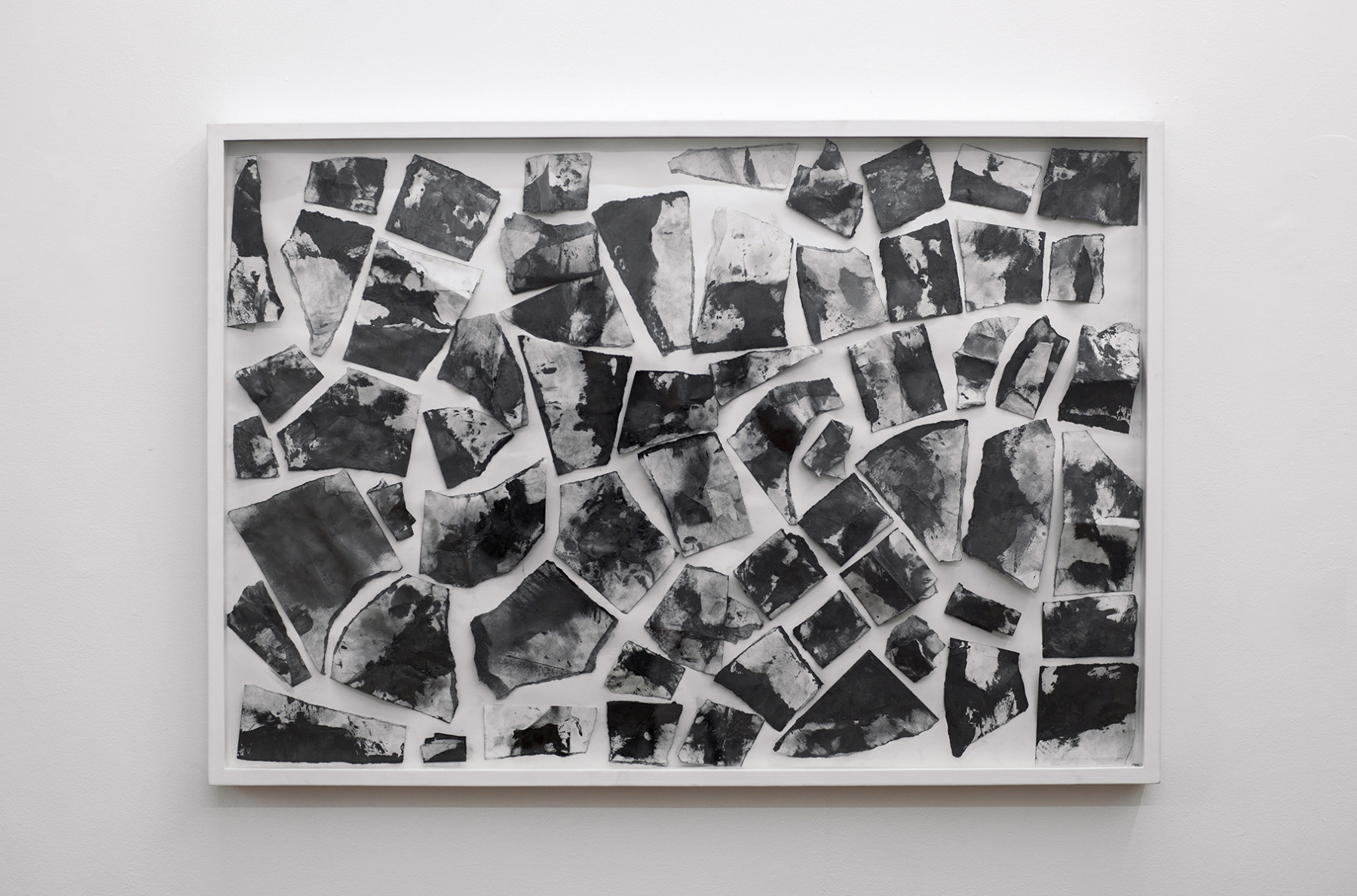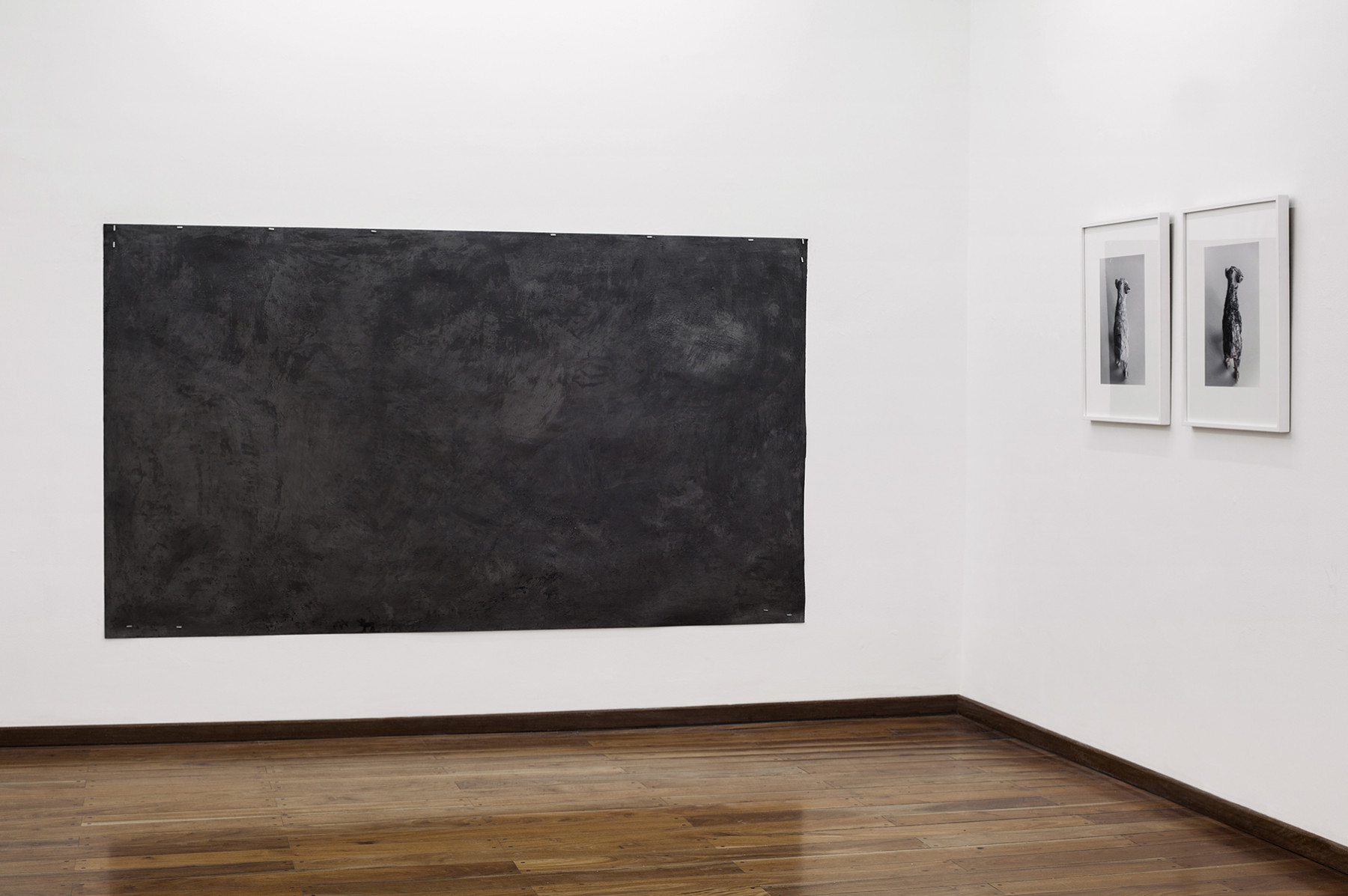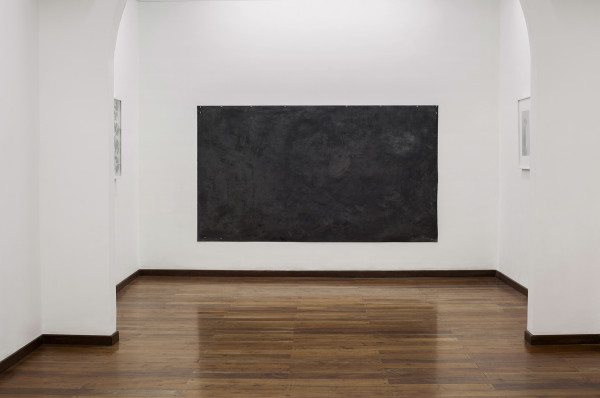
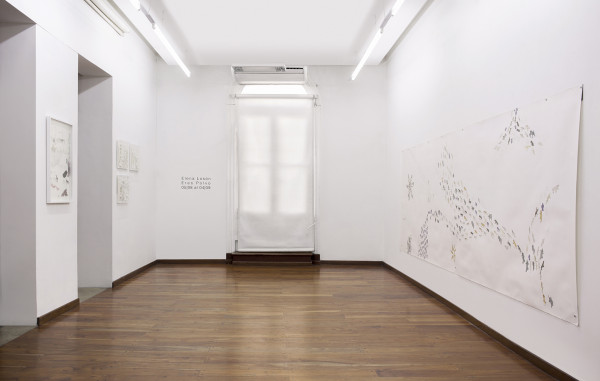



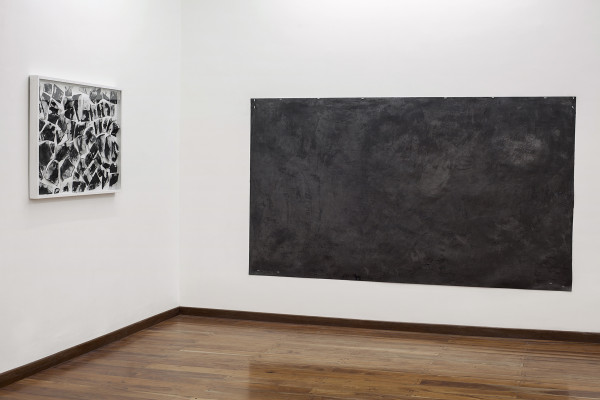
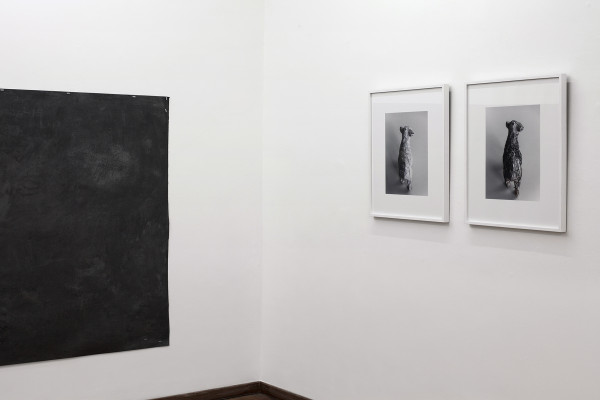


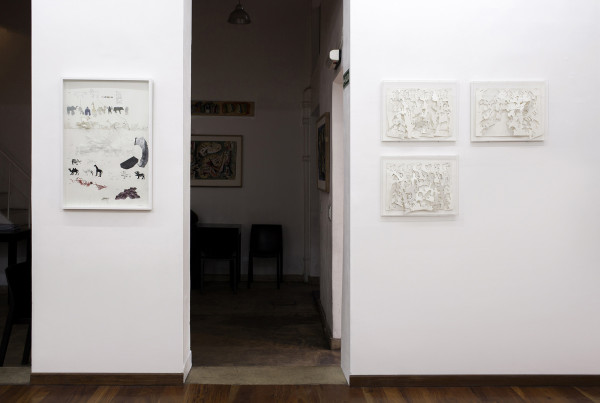
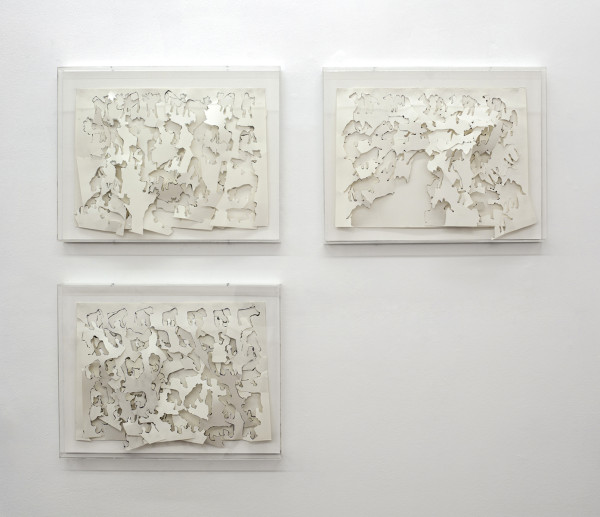
Solo Exhibition at Fundación Esteban Lisa, Buenos Aires
By
FERNANDA ARÁNGUIZ M.
Date
AGO, 5 — SEP, 4 2015

1
“All that is solid melts into air”[1], said the philosopher when he spoke about modernity, about the once contemporary culture and its constant destruction. But then is that tiny and unmade part the one that easily rises up on the air and, as a cluster of thoughts and energy, stays there, waiting, a long while before vanishing.
Before disintegrating into a body that’s not only body but also capability. As a part, it still recalls to itself and more –than itself. And expands sharing sense to reconstruction.
A whole is restored by that part which, as the ruin, is able to impose a task to the thinking: to make a new construction without precedents, that stretches out sharing and spreading its incomplete nature in it, such that’s neither lack nor fracture but only unfinished.
2
Then the work, that openness and particularity space, reveals as a new attempt enrolled into the relentless human endeavor to understand the universe.
The universe and life and the history of life, that is not possible to reproduce reality and, yet, it exists. When the sun bursts into darkness, somehow it seems like the air has been solidified. Thus are emerging the certainties that finish to settle those solid floating particles over planes, forms, backgrounds, contrasts, silhouettes, cuttings, of the parts and the whole.
That develops from one, no other than itself. A concentration of elements, graphics, characters, sometimes marching, sometimes in shadows, sometimes absence, sometimes transfer. The whole, strengthen in making. Because it is not possible to talk about what is named if it hasn’t been made, it is in practice where that space into which immensity inhabits emerges and appears to others.
The vast for what is one, in the part and by the whole. From dust the work that’s not end, but round, not product, but evidence of the making. Of the hand and the handmade, of the human by time and distance to make it imperceptible.
3
The gap doesn’t show in the graphics or the colors in shape, the rope and the remnants are condition for the inexplicable. Far from mere form, the work is at the same time idea, sense, and display of a sense that becomes expansion and latency of something more than the unnamed.
If the name isn’t more than lack of precision to refer to the same, the work is classification that moves the thinking, symptom of the hand that –as its speaks– expands for the other to –as he hears– find the absolute with it. The work is act and convergence of free sense elaboration and pure self-destruction.
Of the substance that grounded into very small particles still shows it essence. To knowledge by the proof reaching the synthesis. The unseen in the known. Identity into small masses of color that take over the outlined and under-graphite disappeared format, into the silhouette of the animalario, whose absence reminds us the moment of its creation.
Reproduction of the road blindly and distantly walked, compelling the invention of the new and the same, which inverts and reverts in the sheet and on the wall. A universe organized in shape and rest, ink and reverse, mold and figure. The truth cannot be found further from experience.
Of discovery as from the hand escapes the thinking, origin, result and return of the process, metaphor of that un-evitable dismissal. From the start the round, and the part for the dust. The whole is not at the origin but there’s possibility.
[1] By Marshall Berman, published in New York in 1982.
Solo exhibition at Fundación Esteban Lisa, Buenos Aires
By
Sebastián Vidal Mackinson
Date
AGO, 5 — SEP, 4 2015
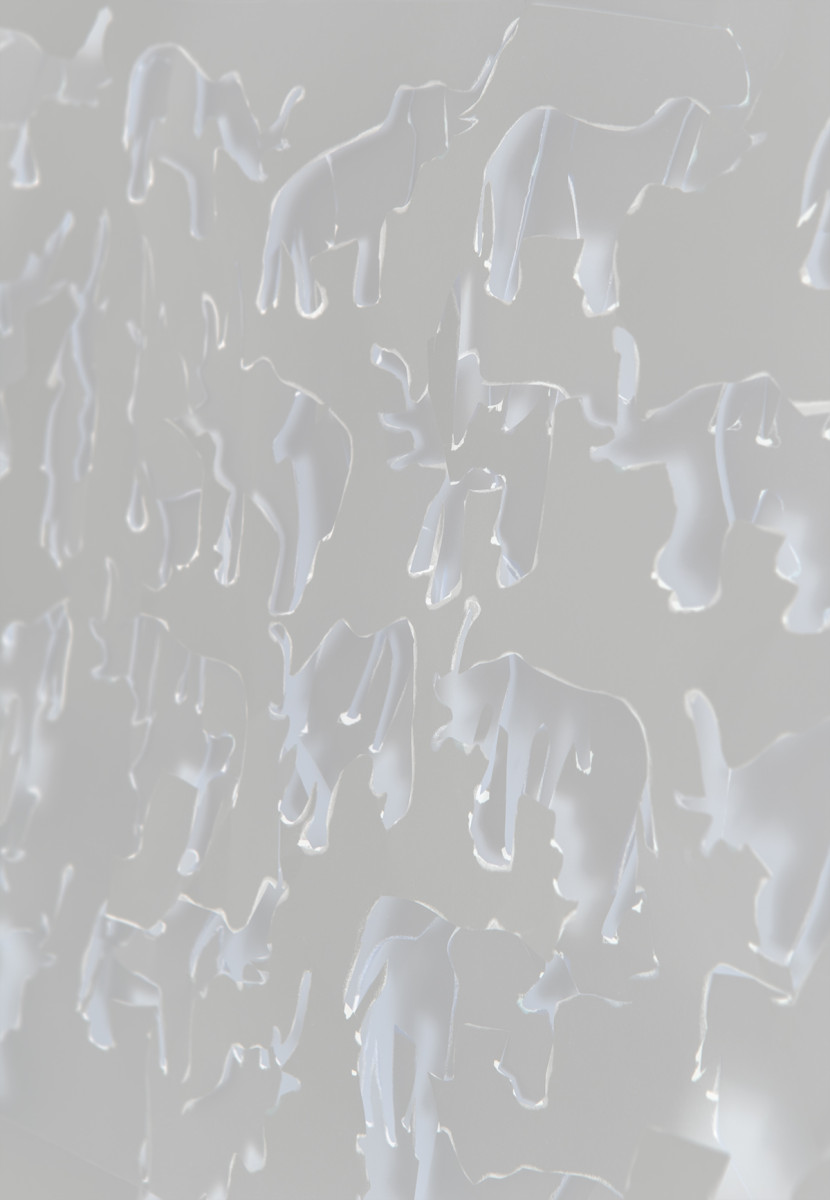
The journey, in its dissimilar meanings, activates a new emotional cartography which tolerates a dislocation in the perception, a strangeness that shapes a new topology where the senses tie in a fashion different from the quotidian. It brings a foreignness condition, with declinations on the extra-ordinary, which only suffices if a dissimilar perception is placed within the common horizon of expectations.
Thus, the experience of being foreign admits the doubts about the given, about certainties and reconciles with the contingency arising from an imbalance. It enables an adjustment of identity, in which we traditionally recognize ourselves, to reshape into a situational foreignness, into a transition with diverse implications. Eres polvo, Elena Loson’s exhibition, shows pieces meddling in the topics of occupation and reoccupation related to this notion, as well as the negotiations inherent to the instance of detachment where common perception seems, if only for a few seconds or an eternity, to be suspended and suggestion seems to become present.
Eres polvo, therefore, shows drawings which represent toy animals, serialized mass-consumption products, in transit. Zebras, hippos, elephants, gorillas and camels seen from the front, the side, the top, and the bottom…there are no peculiarities here, simply the representation of types, of animals alien to our daily life which could only be seen in representations or in captivity at a zoo.
And moose. The animal which escapes this reconnaissance group of precise geographical boundary, with the components and shades of abstraction, fantasy and imagination Africa holds as a continent. What is a moose doing here? It operates as a symbol of the implemented operations. It is the foreigner among foreigners, the tip from which to pull to untie this entanglement.
Loson works with graphite. With it, she marks the line, and also, covers surfaces. She does not pursue a magical representation, but a plausible one, thus signaling the two-dimensional quality of support and operations implemented in every case. The proportion between size and motifs structures narrative where transit or exhaustion is shown in two specific areas: one dominated by color, the other, by black and white. In turn, she operates with the residue of the creative process of a work of art and reutilizes it as a procedure print, as well as a topic. She shows traces of the operations used enabling, once again, the opening to the notion of foreignness. By showing the residue, she points out its poetic qualities which, in a tautological dynamic, refracts in the surprise of the looks when you gaze at them. And it is here, thus, where foreignness coexists with us daily.



